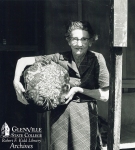There are laws protecting our designs as patternmakers, and creators of original fiber art. They vary within countries although there is the Berne Convention from 1886 with updates that covers all countries which sign onto it (over 180). Speaking specifically as a resident of the United States, here are our rules as of publication (Jan 22, 2022).
Prior to 1924 works are in Public Domain.
After and up to 1978 copyright extends 75 years beyond death.
As of Jan 1, 1978 the copyright is 70 years after death OR 120 years from “publication” which could mean first showing or in print/social media, which ever is first.
IF there is no name attributed to the work – anonymously- then 95 years from publication or 120 years from creation
Canadian Law the copyright extends 70 years beyond death (as of Jan 1, 2023). They are also members of the Berne Convention and thus will honor other countries laws if longer period of time.
These parameters help us as creators know if an object, image or artwork can be copied without receiving written permission from the maker. If it was made before 1924 (in the US) probably ok. There could be some gray area but not necessary for this discussion. That leads us into the topic of ANTIQUE RUGS published in books of historical collections, in public institutions, found at sales. As a patternmaker can a rug be drawn from the image exactly and put into the catalog under a copyright? NO it is in the public domain (older than 1924). But if the designer adds/changes elements to the border, eliminates elements or changes positions, scale that would create a new design ADAPTED from the original. The new design is uniquely that patternmaker’s and can be sold exclusively by them. I would advise addressing the adaptation from an antique in the description when selling the pattern to cover yourself from forgeries. (This has happened recently).
Adaptation vs Inspired by can lead to a full discussion. You see an artwork in a gallery, online, in print and want to replicate the work with rughooking. FIND the artist for permission. When you receive written approval for one time interpretation of the design in fiber you are ADAPTING the work into a new medium. A photograph of mountains reminds you of a hike you went on and spurs a design. You are not looking at the image and copying but a memory was triggered by seeing it. You were INSPIRED to be creative.
Cultural Appropriation vs Appreciation when considering using symbols from other cultures in this age one should always consult with a representative of that group who understands the meaning and community’s connection. This means even graphics which may be in common use.
In my own work as a patternmaker I used a regional resource for motifs – the southeastern Pennsylvania FRAKTUR artists. My research of original works included receiving approval from the collections to use motifs and reference back to the original work, maker, institution. I hand drew motifs and collaged them into new designs under the name of Ruckman Mill Farm.
Here is a quick list of copyright links I compiled in researching a talk with the Green Mountain Rug Hooking Guild members.
Here are several articles found in Rug Hooking Magazine focusing on copyright in our community. There is one at least every year with a different focus.
A series in 1991 with a lawyer talking about what is copyright – the pattern and what is “fair use”
The article written by Green Mountain Hooked Rugs about Copyright.
AND the article by Tamara Pavich Asking Permission to Adapt Contemporary Art
Bottom line from these articles and many discussions I have had with rug hooking artists ASK FOR PERMISSION from the artist, if you can’t locate them or receive a NO, move on. There are many other opportunities and there is always your own creative skills. Be honest about your source for inspiration or adaptation.
This post was created as the result of an invitation to conduct a workshop for the Green Mountain Rug Hooking Guild. The discussion was recorded and is available as a members benefit. Click Here to join the Guild
I am available to lead a group in a question and answer period addressing copyright. See the contact page for more information.






















































































